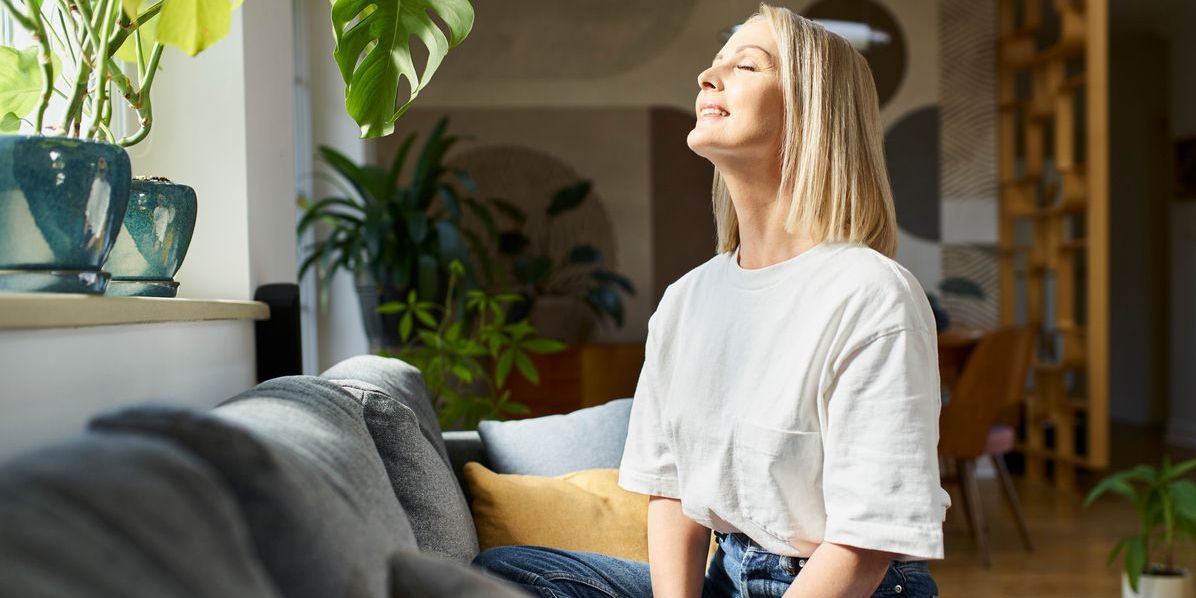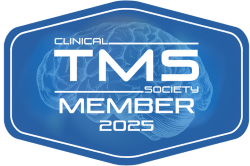
By Mollie Swillum, LCSW, Therapist, Relief Mental Health in Oak Brook, Illinois
Anxiety is a very common psychological diagnosis. Every day, people around the world learn new approaches and techniques for managing anxiety in all the ways it can manifest. We can all relate to the daily worries and anxieties that pop up with all things in life. However, it is important to understand the distinction of disruptive symptoms. For a person with clinical anxiety, those worries and feelings are exponentially more powerful than the typical fears and worries most of us experience from time to time. The symptoms of a clinical anxiety diagnosis can be consistently disruptive and debilitating in multiple facets of life—career, school, interpersonal relationships, self-image, and more.
What is Clinical Anxiety?
The Diagnostic and Statistical Manual of Mental Disorders (DSM-5) indicates that all anxiety disorders are characterized by the following:
“A persistent, excessive fear or worry in situations that are not objectively or inherently dangerous.”
According to the National Institute of Mental Health (NIMH) and the World Health Organization (WHO), millions of people have anxiety in the U.S. and worldwide.
Worldwide:
- Almost 5% of the total population – 301 million people – have some form of anxiety that meets a clinical diagnostic threshold
United States:
- 31% of adults – 65 million people – report a clinical diagnosis of anxiety during their lifetime
- 19% of adults – 40 million people – report clinical anxiety that significantly disrupts daily life
Both the NIMH and the WHO make it clear that anxiety is a public health challenge. With anxiety being a common diagnosis, there are plenty of effective, evidence-based treatment options available for managing anxiety! Anxiety is a common diagnosis. Seeing my patients lean into the therapeutic process firsthand, in and out of session, shows that treatment can translate to long term success in managing anxiety. My patients can manage their symptoms, strategize skills that work for them, and participate productively in all phases of life–from home life to interpersonal relationships, from academic pursuits to work. I have seen this firsthand be life changing, empowering and eye opening.
Treatment for Anxiety: Traditional, Innovative, and Practical
Standard treatment for anxiety typically involves a combination of therapy and medication. The most common therapeutic approaches include Cognitive Behavioral Therapy (CBT), Dialectical Behavior Therapy (DBT), Acceptance and Commitment Therapy (ACT), and Exposure Therapy.
Common medications for anxiety include anxiolytics, benzodiazepines, and in some cases antidepressants. Finding the best fit for a medication that can be effective in conjunction with psychotherapy is an important topic to address with a medical professional who can best suit one’s needs.
At Relief Mental Health, we use a range of new, innovative approaches to treating anxiety, in addition to traditional techniques. A couple of these treatments include:
- Transcranial magnetic stimulation (TMS). This technique involves stimulating brain areas associated with anxious depression with gentle electromagnetic pulses, which evidence shows reduces symptoms of anxiety co-occurring with depression.
- IV ketamine infusions. IV ketamine infusions are fast acting, intravenous doses of a medication called ketamine.
Traditional and innovative treatments are only part of the therapeutic solution for managing anxiety. Most well-regarded treatment centers also involve classes or one-on-one coaching on recovery-affirming lifestyle changes, which promote overall happiness and well-being. In my clinical work, I advise my patients on specific habits and practices they can develop, which, as a consistent part of their daily routine, enhances the clinical treatment they receive during office visits.
Five Practical Habits to Relieve Anxiety and Promote Recovery
The following tips complement professional support for anxiety by creating optimal conditions for you to grow, thrive, and heal. These tips can also help reduce anxiety for people without an anxiety diagnosis, but want to learn how about managing anxiety that comes with the typical ups and downs of life as an adult.
Five Steps to Managing Anxiety: Habits to Promote Wellness
Exercise
Exercise releases endorphins into the brain which are often associated with pleasure and bringing calmness to oneself mentally and physically. With structure, routine, and exercises that an individual feels comfortable completing on a consistent basis, anxiety may still occur but be diminished and manageable. After adding exercise into your schedule, even just walking outside 15 minutes per day, you might find it easier to problem solve rather than constantly feeling stuck in racing thoughts or consumed by “what if” statements.
The amount and type of exercise each person needs varies depending on their current state of physical health, including sleep patterns, water intake, current medical issues, or injury history/physical problems. It is recommended to consult with a medical professional before engaging in increased physical activity.
Here are the guidelines published by the Centers for Disease Control (CDC) in its publication, Physical Activity Guidelines for Americans, 2nd Edition. These guidelines establish the amount and type of exercise necessary to experience the physical, psychological, and emotional benefits of exercise. The intensity and frequency of exercise can be determined by your level of anxiety, impact on functioning, and goals around incorporating exercise.
For instance, if you experience anxiety and your goal is to reduce panic attacks, you may notice a difference of two panic attacks per week vs. seven panic attacks per week after adding exercise into your daily routine. You can calibrate your routine based on your results: remember – this is all about you and what works for you. The CDC echos this by encouraging each individual to find what works for them and build onto fitness goals from there.
Reduce Alcohol Consumption
Alcohol impacts anxiety, and in the long run, can increase symptoms. Many people with severe anxiety use alcohol in an attempt to numb racing thoughts or overwhelming worries. This is called self-medication. Self-medication causes more problems in the long run than it solves. Alcohol is a depressant. With consumption, you run the risk of increasing symptoms of depression– feeling lethargic, unmotivated, or participating in negative self-talk. In turn, this could lead to a cycle of alternating symptoms of depression and an increase in anxiety. Every person is different, so it’s important for individuals to seek the help of a licensed and qualified mental health professional for personalized recommendations about alcohol consumption.
Reduce Caffeine Consumption
Good news- you can still make room for coffee!
However, listen to your body if you struggle with anxiety symptoms while drinking coffee. Whereas alcohol is a depressant, caffeine is a stimulant. Caffeine can imitate behaviors around anxiety such as restless energy, racing thoughts, elevated pulse, and elevated blood pressure. Because these are common traits of anxiety, consume with caution! Also, this does not mean you need to eliminate caffeine completely unless recommended by a medical professional. You can still enjoy your morning cup of Joe while being mindful of caffeine’s stimulant effect on any current anxiety symptoms.
Practice Meditation
Meditation is an effective complementary technique that can help you reduce and manage your anxiety symptoms. The simplest and most efficient entry into the world of meditation is through a basic mindfulness practice. The goals of meditation revolve around bringing peace, awareness, and mindfulness to your physical and mental state with a non-judgmental, calm approach that prioritizes existing in the moment.
Meditation doesn’t always involve picturing yourself on a beach or visualizing your troubling thoughts floating away. Meditation can be sitting quietly in silence and practicing deep breathing after a long day at work, listening to music without engaging in other activities and focusing on the rhythm, sounds, and the feelings it engenders.
A meditation practice is most effective when done consistently. You can start with just a few minutes of peace, grounding, and reflection every day. The best way to find success with meditation is to start small, such as incorporating a few minutes a day.
Build a Healthy and Balanced Food Intake
Research shows that eating a certain number of foods with additional vitamins can positively impact mood, which may in turn decrease anxiety. Eating more Mediterranean foods, which are rich with nutrients such as Omega-3 fatty acids, vitamins, and fiber, has been shown to reduce the risk of stress, anxiety, and other mental health issues. In fact, several studies – like this one – found that individuals who added more of these foods to their regular food intake consistently reported feeling increased happiness in daily activities and decreased stress levels.
In addition, eating foods with more protein can boost energy levels to help reduce fatigue that can occur with anxiety. Most importantly, changing or adjusting your food intake is proven to be consistently successful when completed gradually. Patience, adaptation and consulting with professionals (i.e. primary care providers, nutritionists, dietitians, mental health professionals) are key ingredients to making these moves to improve physical health.
Putting These Tips into Action: Consistency is Key
Anxiety can thrive in unstructured, unpredictable circumstances.
So what’s the best way to handle it?
Structure, predictability, and routine.
While consistency is the secret to success, self-compassion and perspective is a great foundation on which to start. If you find your way off course, it’s important to be kind to yourself. Allow yourself some grace as you strive to incorporate new structures and routines into your daily life. Not every day has to be the same, and not every day has to feel productive. Rest and slowing down can be productive too!
When to Seek Professional Support for Managing Anxiety
This decision is different and unique for all personal situations and current life circumstances. If you feel overwhelmed by your anxiety symptoms, I recommend seeking a full psychiatric evaluation administered by a licensed and qualified mental health professional. Another option is to ask open ended questions from your personal support system – friends, family, peers, trusted colleagues – and being open to feedback about your observed behaviors and their opinions can give you context. This will help you make decisions with a clear mind and the objective input of caring people invested in your happiness and wellbeing.
This can be more than one discussion, and it can include all the members of your personal and medical support system at different times. Together, your family, friends, and physician/therapist can collaborate, offer input, and help you determine the best fit for your physical, psychological, and emotional needs. Keep in mind-therapy is not only for crises, but can also help people learn more and build on what works, as well as understand what may not be helpful in building long term beneficial mental and physical health habits.


